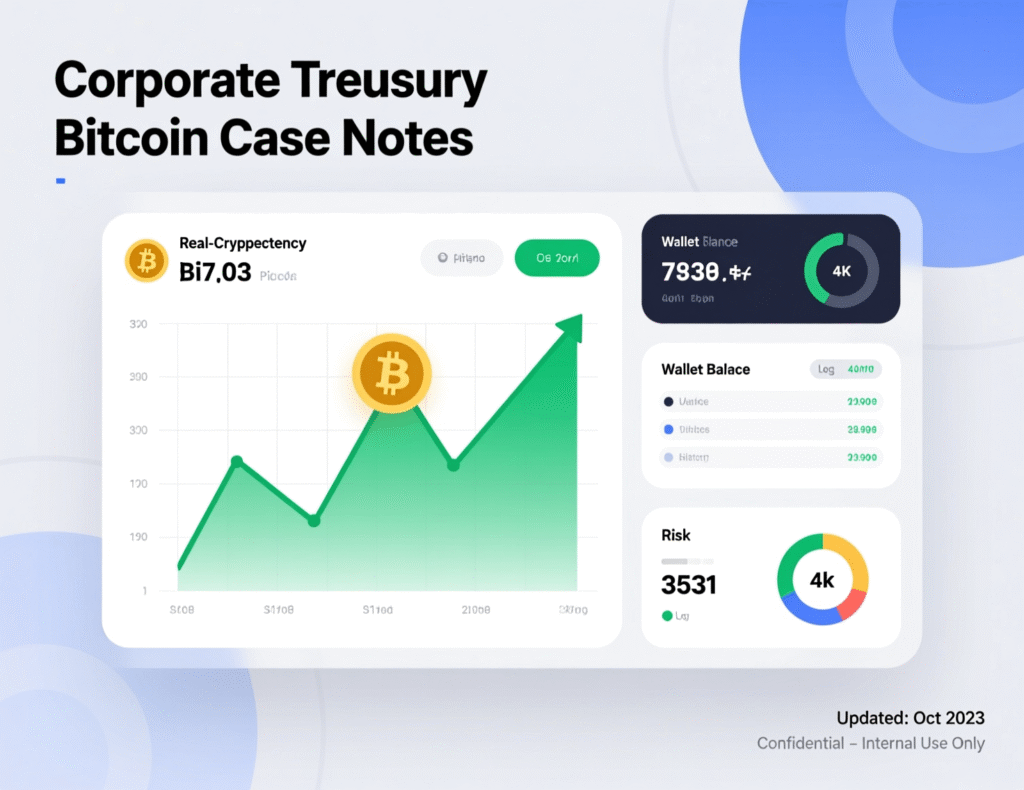Institutional Crypto Adoption
Institutional crypto adoption has crossed a decisive threshold. Since the SEC approved U.S. spot Bitcoin ETFs on January 10, 2024, pension consultants, OCIOs, and corporate treasurers have gained a regulated, familiar wrapper to access Bitcoin exposure without building custody or trading desks from scratch.
BlackRock’s IBIT has surged toward $100B+ AUM within ~21 months, becoming one of the fastest-growing ETFs ever and a bellwether for demand across RIAs, family offices, and institutions. Meanwhile, spot Ether ETFs launched in July 2024, extending the menu of compliant digital-asset exposures. Together, these products have reframed the conversation: institutional crypto adoption is no longer a distant prospect; it’s an allocation debate happening in investment committees today.
Why ETFs Changed the Adoption Curve
ETFs solved three pain points that slowed institutional crypto adoption:
Operational simplicity
Exposure via brokerage accounts, no wallets or private keys.
Compliance clarity
1940 Act/1933 Act structures with established service providers and surveillance-sharing arrangements.
Scalability & price discovery
Deep secondary-market liquidity and T-+ settlement within familiar workflows.
Notably, IBIT’s AUM has approached ~$100B with hundreds of thousands of BTC held on behalf of investors, a scale that legitimizes bitcoin at the board level. Bloomberg, FT, and issuer data all highlight the pace of inflows and record ETF industry growth in 2024–2025.

From Access Product to Strategic Asset: The Investment Case
Institutions increasingly frame Bitcoin as a strategic asset with properties distinct from equities, bonds, and commodities:
Programmatic supply
(21M cap) and halving cycles drive a non-traditional issuance schedule.
Macro sensitivity
Mixed with secular adoption creates a “risk-on with idiosyncratic drivers” profile.
Diversification
Potential at small weights (e.g., 1–5%) in multi-asset portfolios.
Liquidity & price discovery
Now enhanced by ETF secondary markets and institutional market makers.
Surveys from CFA Institute/Nomura cited in 2023–2024 suggest allocators anticipate 5–10% total digital-asset exposure over a multi-year horizon—recognizing both risk and opportunity.
Accounting and Policy Shifts that Lowered Friction
Two developments materially de-risked implementation for U.S. GAAP filers:
FASB ASU 2023-08 (effective 2025)
In-scope crypto assets (e.g., bitcoin, ether) measured at fair value through net income, replacing the impairment-only model. This improves transparency and reduces asymmetry.

Regulatory clarity for ETFs
The SEC’s January 10, 2024 approval order opened the door to spot Bitcoin ETPs after years of futures-only products, bringing institutional crypto adoption squarely into regulated markets.
Complementary policy papers from BIS and others document deeper TradFi linkages and supervisory attention as flows scale.
Allocation Frameworks for Institutions
To move from idea to allocation, consider three reference portfolios. Each assumes a liquid, ETF-based implementation plus periodic rebalancing (quarterly or semiannual).
Liquidity-First (0.5–1% BTC via ETF)
Who
Cash-constrained institutions, cautious committees.
Goal
Test operational workflows and governance; minimal tracking-error impact.
Risks
Signaling/optics vs. meaningful contribution to returns.
Diversifier Sleeve (2–3% BTC; optional 1% ETH)
Who
Multi-asset portfolios seeking low cross-correlation sleeves.
Goal
Incremental diversification and asymmetric upside with defined bands.
Risks
Rebalance discipline when volatility spikes.
Strategic Thesis (5% BTC core + 1–2% ETH)
Who
Return-seeking mandates with long horizons, strong governance.
Goal
Express macro/technology adoption view; policy-driven supply schedule.
Risks
Drawdown tolerance, committee turnover, and narrative risk.
Risk control tips
Pre-commit to caps per issuer, mandate, and wrapper; set drawdown-triggered review points; and model scenario P&L including basis risk (ETF premium/discount, fees).
Case Notes: What Early Movers Taught the Market
Corporate treasury
Strategy (formerly MicroStrategy) reframed BTC as a long-duration treasury asset and accumulated ~640k+ BTC by Oct 2025 (company disclosures), illustrating governance, capital-markets financing, and headline-risk trade-offs.
Public company holdings
Tesla maintains ~11.5k BTC on balance sheet, showing a “retain core/trim tactically” approach through cycles.
ETF channel
IBIT’s growth toward $100B AUM proved that primary/secondary liquidity and trusted brand platforms accelerate institutional crypto adoption.
Reality check
ETFs can experience both record inflows and meaningful outflows positioning isn’t one-way.
Implementation: Practical Steps for CIOs & Treasurers
Define objective
Inflation hedge, diversification, return enhancement, or strategic technology bet.
Select wrapper & venue
ETF (primary for most institutions) vs. custody account vs. SMA/mandate.
Custody & ops
For direct holdings, specify cold-storage policy, key management, insurance, SOC-2 vendors.
Accounting & tax
Apply ASU 2023-08 for fair-value treatment, coordinate with auditors; confirm jurisdictional tax handling.
Risk limits
Sizing caps, tracking-error bands, stop-losses or rebalancing bands (e.g., 150–200 bps).
Governance & reporting
Update IPS/treasury policy; board education; quarterly risk dashboards.
Liquidity & market access
Stagger entry using VWAP/TWAP, avoid thin closes, consider creation/redemption windows.
Counterparty diversification
Avoid single-point risk diversify issuers, APs, and custodians.

ETF or Direct Ownership? A Quick Comparison
| Dimension | Spot Bitcoin ETF | Direct BTC (custody) |
|---|---|---|
| Ops | Easiest—brokerage rails | Requires wallet/custody stack |
| Fees | Expense ratio (e.g., 0.19–0.25% typical leaders) | Custody + trading fees, but no fund ER |
| Tracking | NAV tracking; small premium/discount possible | Tracks spot; slippage on trade |
| Governance | Familiar to boards | New control environment |
| Tax/Acctg | Fund taxation + standard reporting | GAAP fair value (ASU 2023-08) directly on balance sheet |
Research Signals to Watch
ETF flow momentum
Inflows/outflows as leading sentiment indicators.
Google Trends
Retail & mainstream interest spikes coinciding with policy events (e.g., ETF approvals).
Policy & prudential notes
BIS and national guidance on bank/insurer exposures.
Risks & Mitigations
Volatility & drawdowns
Use position caps, rebalance orders, and scenario testing.
Liquidity mismatches
Favor highly traded ETFs; check creation/redemption health and market maker support.
Concentration
Avoid single issuer, single custodian.
Headline & governance risk
Pre-approve a comms plan; align with ESG/mission statements.
Model risk
Do not extrapolate past halving cycles; maintain diversified return drivers.
Localization Buckets (GEO)
United States
Alt titles/metas
“Institutional Crypto Adoption in the U.S.: ETFs to Strategic Bitcoin Allocation”Geo keywords
“Bitcoin ETF flows US”, “ASU 2023-08 crypto accounting”, “401(k) bitcoin exposure”
United Kingdom
Alt titles/metas
“Institutional Crypto Adoption UK: Spot ETFs and Bitcoin in Portfolio Strategy”Geo keywords
“UK crypto regulation FCA”, “bitcoin ETP London”, “UK pension bitcoin”
India
Alt titles/metas
“Institutional Crypto Adoption India: ETFs Abroad, Domestic Allocation Views”Geo keywords
“bitcoin ETF global access India”, “GIFT City crypto”, “digital asset tax India”
Concluding Remarks
The launch of spot Bitcoin ETFs and the emergence of Ether ETFs redefined the on-ramp for institutional crypto adoption. With improved accounting (ASU 2023-08), maturing market plumbing, and recognizable brands at the helm, CIOs now evaluate Bitcoin not as a novelty, but as a strategic asset that can play a modest yet meaningful role in diversified portfolios.
Implementation is no longer a technology problem; it’s a governance, risk, and sizing decision. Whether you’re piloting a 1% sleeve or building a 5% thesis, success will hinge on discipline: set objectives, diversify providers, and systematize rebalancing. For institutions ready to move from exploration to execution, the conditions have never been more accommodating.
CTA
Want an allocation blueprint tailored to your IPS and board constraints? Get our 10-point due-diligence checklist and model policy addendum contact us to begin.
FAQs
Q1. How do spot Bitcoin ETFs work for institutions?
A : They hold bitcoin with qualified custodians and issue shares that track NAV. Institutions buy/sell shares on exchanges via prime brokers, avoiding direct key management while gaining regulated exposure. Creation/redemption keeps prices near NAV, though premiums/discounts can occur.
Schema expander: Clarify custodians, APs, and liquidity considerations.
Q2. How much should a portfolio allocate to bitcoin?
A : Common institutional ranges are 0.5–5%, reflecting risk tolerance and mandate objectives. Start small (0.5–1%), use rebalancing bands, and reassess annually.
Schema expander: Include example rebalancing policy and max position caps.
Q3. How does ASU 2023-08 change accounting?
A : Beginning 2025 (early adoption allowed), in-scope crypto assets are measured at fair value through net income with enhanced disclosures—replacing impairment-only accounting.
Schema expander: Cite Deloitte DART and FASB in help text.
Q4. How can we mitigate ETF issuer/custodian concentration risk?
A : Split allocations across multiple ETFs/issuers, monitor AP participation, and review custodial SOC reports and insurance. Establish a contingency plan for transfers or redemptions.
Q5. How do Ether ETFs fit in?
A : Ether ETFs (U.S. trading since July 23, 2024) extend toolkits for diversified digital-asset sleeves (e.g., 2% BTC + 1% ETH).
Schema expander: Add liquidity notes and fee differentials.
Q6. How does institutional crypto adoption impact market liquidity?
A : ETF channels deepen liquidity by aggregating demand and onboarding professional market makers. Watch flow data and spreads to gauge conditions.
Schema expander: Link to issuer flow pages.
Q7. How do we address governance and reputational risk?
A : Update IPS/treasury policies, define approved wrappers, onboarding criteria, and comms protocol. Educate the board, document rationale, and align with stakeholder expectations.
Q8. How can we model bitcoin in risk systems?
A : Use scenario analysis (e.g., ±50% shocks), realized volatility inputs, and stress testing. Treat bitcoin as a high-volatility, low-income asset with unique drivers.
Schema expander: Note data vendors and proxy assumptions.
Q9. How does Google Trends relate to flows or price?
A : Search interest spikes around catalysts (e.g., ETF approvals) can correlate with sentiment, but are noisy and non-causal. Use as a supplemental indicator only.
Schema expander: Include research references.


